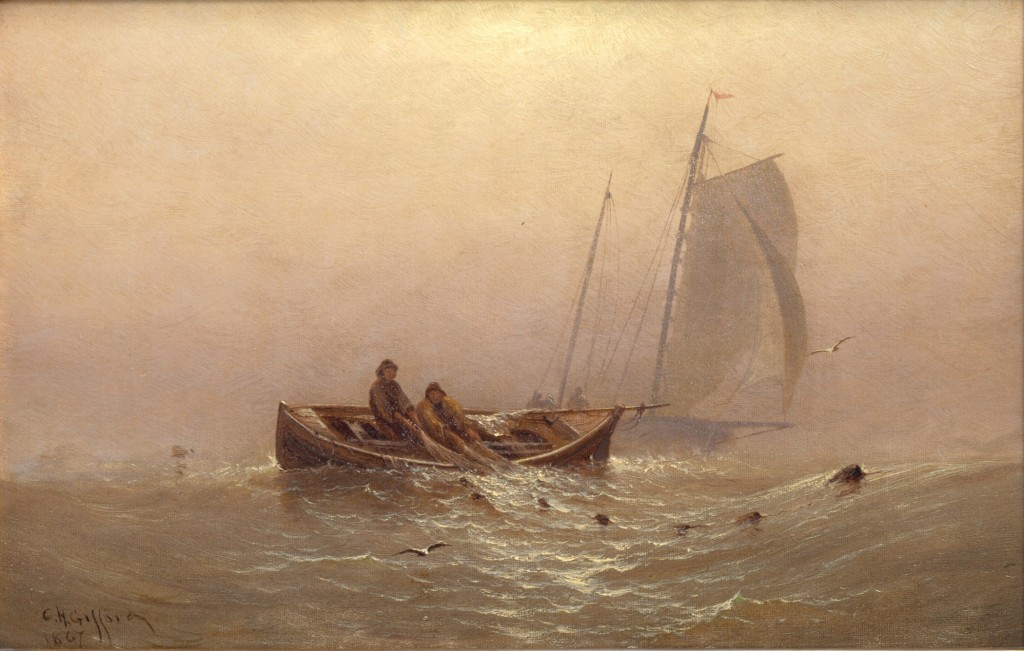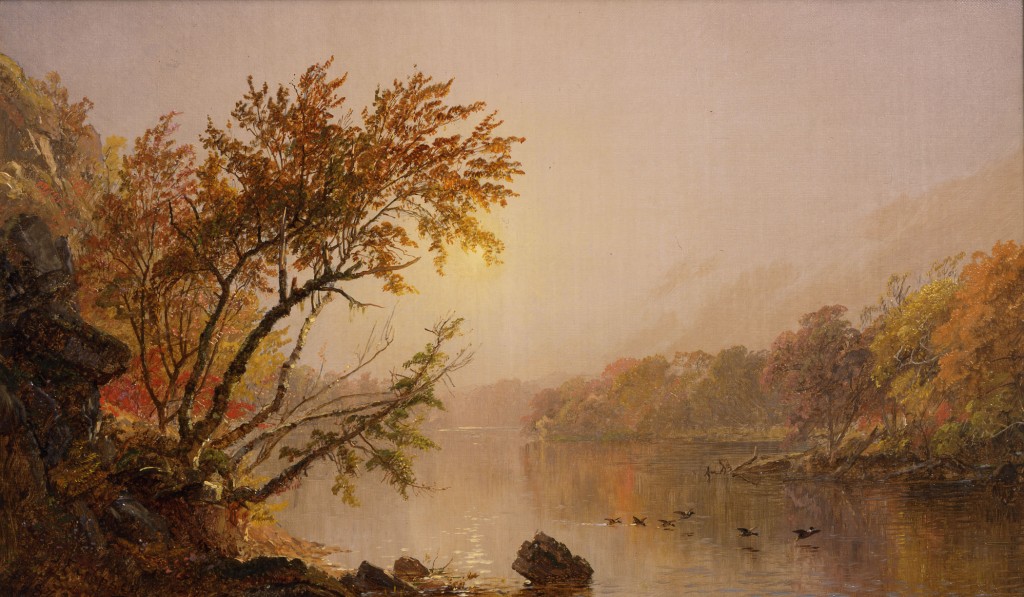
“In my opinion a museum cannot and should not be showing only art by dead people.”
Lee Musgrave was sitting in his little ground-floor office at the Maryhill Museum of Art, away from the sweeping view just outside of the Columbia River Gorge and the eastern face of Mt. Hood. He’d just told me that after 14 years as the museum’s only curator he was getting ready to retire — he leaves at the end of July — and he was in a relaxed, expansive mood.
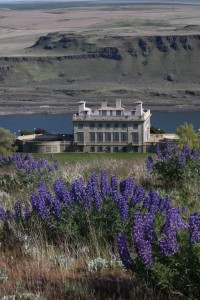 Of course, I’d just driven the 110 miles east from Portland to see a bunch of paintings by dead people: the museum’s show Hudson River School Sojourn, which is on view through July 8.
Of course, I’d just driven the 110 miles east from Portland to see a bunch of paintings by dead people: the museum’s show Hudson River School Sojourn, which is on view through July 8.
But then, I was also curious to see the newest incarnation on the museum grounds of Musgrave’s annual outdoor-sculpture invitational, Maryhill’s lively contemporary response to its historic collection of Rodin sculptures in the indoor galleries. And if this quirky, oddly intoxicating little museum hadn’t begun to pay much more serious attention to the contemporary world in the past couple of decades, I might have just left it dozing away in the desert and never gone visiting at all.
These days, I consider it a personal requirement to drive to Maryhill at least once a year, and I freely confess that although I find the museum an intriguing place — I can’t think of any institution anywhere else, even in the wild-and-woolly West that it so quintessentially represents, that’s quite like it — a lot of the allure is simply that it offers a great excuse to make one of the most drop-dead gorgeous drives in the United States. The improbable fortress that is Maryhill, perched high on a cliff in that stretch east of The Dalles where forest has given way to desert, is the end-of-the-road payoff to a journey that’s already been its own reward.
“In my time here,” said Musgrave, who on the day of my visit was in a genial summing-up mood, “I’ve done 59 contemporary shows and exhibited the work of 258 Northwest artists.”
Those figures might come as a surprise to people who tend to think of Maryhill in response to its historical collections, an assembly of oddments that make it seem a little like a far-west cubby-hole annex to the Smithsonian Institution, “America’s Attic.” There are the chess sets, the Russian icons, the Rodin plasters, the old weapons, a good Native American collection, the road plans of visionary engineer and rural utopian Sam Hill, memorabilia of the turn-of-the-century dance sensation Loie Fuller, the Queen of Romania’s furniture, the peacocks strutting around the grounds (they scare away snakes), the nearby concrete replica of Stonehenge, the French high-fashion dioramas of Theatre de la Mode.
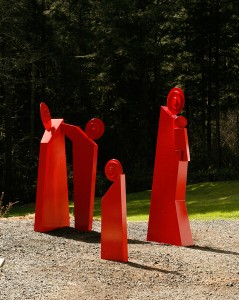 But as crucial as those things are to Maryhill’s identity (a prominent art historian told me the other day that the museum should concentrate on its “creation myth”), they’re not the whole story. Musgrave, a practicing contemporary painter who’s been showing his own work since the late 1960s in California, the Northwest, and even Australia and Japan, has nurtured relationships with contemporary-art collectors such as Portland’s Jordan Schnitzer. He’s worked directly with a lot of artists, and he’s nurtured at least a nascent sense that in this place, time can mingle. “My favorite thing to do is to take contemporary artists and combine them with things in the permanent collection,” he says.
But as crucial as those things are to Maryhill’s identity (a prominent art historian told me the other day that the museum should concentrate on its “creation myth”), they’re not the whole story. Musgrave, a practicing contemporary painter who’s been showing his own work since the late 1960s in California, the Northwest, and even Australia and Japan, has nurtured relationships with contemporary-art collectors such as Portland’s Jordan Schnitzer. He’s worked directly with a lot of artists, and he’s nurtured at least a nascent sense that in this place, time can mingle. “My favorite thing to do is to take contemporary artists and combine them with things in the permanent collection,” he says.
The annual outdoor sculpture show is a good example of how Musgrave’s connections with contemporary artists have influenced what the museum does. On his first day on the job in 1995, he says, he told his new co-workers, “I can’t believe you’ve got 6,000 acres and no sculpture outside.” So he started the sculpture program.
Yes, 6,000 acres — you read that right. The museum’s Texas-ranch dimensions are part of what makes the place seem so downright oddball. And if the sprawl of the museum’s physical holdings presents its challenges — how many other museums have to worry about water tables and grazing rights? — it also helps make Maryhill the unique attraction that it is. The land is what remains of Sam Hill’s lost dream of an agricultural utopia (the museum building was his home and was transformed into a museum through the efforts of his improbable trio of woman friends, dancer Loie Fuller, Queen Marie of Romania, and San Francisco socialite Alma de Bretteville Spreckels, wife of the sugar king).
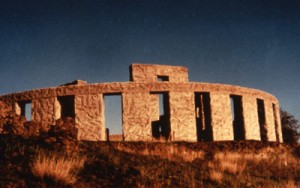 The land has ample space for Hill’s curiously moving Stonehenge replica, a World War I memorial. (Hill also led the drive to build the International Peace Arch, which straddles the United States/Canadian border with one foot in Blaine, Washington and the other in Douglas, British Columbia.) Whole hills surrounding Maryhill are leased to ranchers. And the giant wind farms that have sprung up along the river, their towering white windmills marching in line like an army of barren trees, go across Maryhill land.
The land has ample space for Hill’s curiously moving Stonehenge replica, a World War I memorial. (Hill also led the drive to build the International Peace Arch, which straddles the United States/Canadian border with one foot in Blaine, Washington and the other in Douglas, British Columbia.) Whole hills surrounding Maryhill are leased to ranchers. And the giant wind farms that have sprung up along the river, their towering white windmills marching in line like an army of barren trees, go across Maryhill land.
The windmills put money in the bank — maybe $100,000 a year, says executive director Colleen Schafroth, and perhaps eventually a lot more. And it’s a good thing, because it takes a lot to run this place. It wasn’t built as a museum, and it’s bursting at the seams: Thoughts of expansion are in the air. The museum’s seasonal, from mid-March through mid-November. It’s isolated. The staff is small, and a fair number of important tasks are handled by volunteers. Maryhill recently received a $2 million bequest from Mary Hoyt Stevenson, and half of that goes into the museum’s small endowment, which like almost everyone’s took a hit in the stock market collapse (but comparatively not as bad, says Schafroth: the museum went conservative with its investments sooner than a lot of organizations).
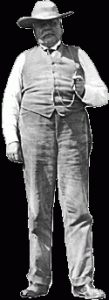 And although admissions are up so far this year, they were down the three years previous. In the boom years of the late 1990s the museum pulled about 80,000 visitors a year. After 9/11 that fell drastically, to the 45,000-50,000 range. Recession, war, high gas prices and possibly the development of other tourism and cultural attractions in the Gorge played into the drop, Schafroth says.
And although admissions are up so far this year, they were down the three years previous. In the boom years of the late 1990s the museum pulled about 80,000 visitors a year. After 9/11 that fell drastically, to the 45,000-50,000 range. Recession, war, high gas prices and possibly the development of other tourism and cultural attractions in the Gorge played into the drop, Schafroth says.
Still, what seems like competition now could be money in the bank in the future. As the urban influence expands to The Dalles nearby, and as the wine industry grows on both sides of the river, this end of the Gorge becomes more and more of a tourist destination.
That bodes well for Maryhill, a museum that draws a high percentage of visitors who rarely or never go to museums elsewhere. That may well have something to do with the place’s mystique, its “creation myth”: Both Musgrave and Schafroth mentioned that visitors say one thing they like about Maryhill is that they feel comfortable there. It’s not intimidating, like other museums and galleries.
“Not intimidating,” of course, can slip into “not challenging” or even “not very good.” And it will be partly the job of Musgrave’s successor, Steven Grafe, to keep the place on the “friendly and interesting” side of the line. Grafe arrives from the National Cowboy Hall of Fame and Western Heritage Museum in Oklahoma City, where he was curator of the Native American collection.
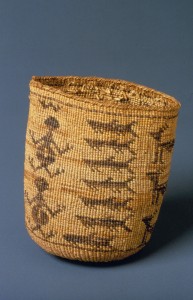 For a single curator to handle the curious variety of collections at Maryhill requires the mind of a generalist, Musgrave says, and Schafroth says that Grafe is, indeed, a generalist. (One of the museum’s long-range goals surely must be to expand its curatorial staff.) But every generalist is specific in his or her own way, and the shift in curators almost certainly will mean a shift in priorities and emphases at the museum.
For a single curator to handle the curious variety of collections at Maryhill requires the mind of a generalist, Musgrave says, and Schafroth says that Grafe is, indeed, a generalist. (One of the museum’s long-range goals surely must be to expand its curatorial staff.) But every generalist is specific in his or her own way, and the shift in curators almost certainly will mean a shift in priorities and emphases at the museum.
Grafe’s training and apparent interests are in Native American art, and that fits well not just with one of the museum’s best collections, but also with its location. This is the heart of Plateau culture territory. Tsagaglalal, “She Who Watches,” the iconic rock carving, is not far away — like Maryhill, on the Washington side of the river. Just downstream lies the dam-flooded ghost of Celilo Falls, until the mid-1950s the great fishing ground and gathering spot of the river nations. Grafe has a doctorate in art history from the University of New Mexico, but his roots are in the Northwest. He’s curated exhibitions at the Burke Museum in Seattle, the Washington State Museum of Anthropology, the Tamastslikt Cultural Institute in Pendleton, the Umatilla County Historical Society in Pendleton, the High Desert Museum in Bend. He knows the area, and he knows the cultural territory.
Coincidentally, I’ve been reading River Song, Craig Lesley‘s terrific 1989 novel about contemporary Native Americans along the Columbia, and it reminds me, as do so many other things, of how crucial it is to understand that native culture isn’t just something in the past, it’s part of the present and the future: The cultures are alive and changing with the times.
The Pacific Northwest has a vibrant community of Native American artists working in both traditional and contemporary forms, and it makes sense that Maryhill, with its decent collection of historical material, could be a center for free exchange of Native American artistic energy, building on the past but extending it into the future. With the likes of the Portland Art Museum, the Hallie Ford Museum in Salem, the High Desert, the Crow’s Shadow Institute in Pendleton, plus the Warm Springs, Tamastslikt, and other tribal cultural centers, Maryhill could be an important link in a growing chain of institutions sharing art and information about native culture. And that, in turn, could become a cultural trail leading visitors around the region.
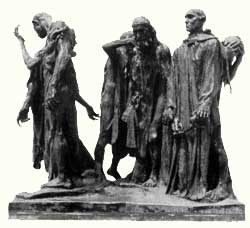 In the meantime, there are all of those permanent collections that must be tended to, shifted around, arranged in different combinations, built upon, combined creatively with fresh materials on loan, so that they seem part of a fresh, contemporary, evolving cultural conversation. And there are the temporary exhibitions: Once the Hudson River School show closes, Ansel Adams: Masterworks, a touring show of 47 works by the popular nature photographer, takes its place July 18-Sept. 13; and The Good Life, a show from the museum’s permanent collection of 30 paintings, drawings and prints celebrating small pleasures, follows Sept. 26-Nov. 15.
In the meantime, there are all of those permanent collections that must be tended to, shifted around, arranged in different combinations, built upon, combined creatively with fresh materials on loan, so that they seem part of a fresh, contemporary, evolving cultural conversation. And there are the temporary exhibitions: Once the Hudson River School show closes, Ansel Adams: Masterworks, a touring show of 47 works by the popular nature photographer, takes its place July 18-Sept. 13; and The Good Life, a show from the museum’s permanent collection of 30 paintings, drawings and prints celebrating small pleasures, follows Sept. 26-Nov. 15.
And how about that Hudson River School show? It represents both the upside and downside of visiting Maryhill. Musgrave assembled this collection of 34 paintings from about 100 in the private collection of Dr. Michel Hersen and Mrs. Victoria Hersen. Some very good painters and paintings are represented, but there are also significant holes, including anything at all from several of the best, most transporting members of the movement: Frederic Edwin Church, Albert Bierstadt (whose dreamily romanticized painting of Mt. Hood is a centerpiece of the Portland Art Museum’s American collection), movement founder Thomas Cole, George Inness, Thomas Chambers, George Caleb Bingham, William Holbrook Beard. That’s an issue facing not just Maryhill but also most small museums: It’s tough to get your hands on the really top-rate stuff.
Yet there are a lot of compensations at the level just below the top, and if this exhibit doesn’t give you much in the way of “wow” moments, it reveals some of the breadth and depth of the Hudson River School, a romantic American movement that continued for two generations from about 1825 to 1915. Spreading up the Hudson River Valley, into the nearby Catskills and Adirondacks and White Mountains, with excursions into Pennsylvania and the New England coast and a surprising number of forays into the American West, the movement straddled nostalgia for European pastoral scenes with a fascination for the American wilderness — which, in the case of these mostly New York painters, often meant Lake George in Upstate New York, as iconic a subject for them as Mt. Hood and Mt. Rainier were for painters in the Pacific Northwest. (And so it continued: Several of Georgia O’Keeffe’s most prized paintings from before her New Mexico days are of Lake George.)
Like the New England transcendentalists, these painters were concerned with man’s place in nature, and their theme carries through compellingly to Maryhill audiences, because that is also an enduring theme in the Pacific Northwest. In most of these paintings people are either absent or miniaturized, hovering in the shadows.
Charles Hunt’s Hunter in a Stormy Landscape, an Adirondacks scene, speaks to the mood of a lot of this work. He gives us not what we in the West think of as a wilderness, but a well-worn path, the hunter dwarfed by trees and a lowering sky. The hunter is in nature, perhaps apart from nature, but not above nature: He and his surroundings have arrived at that moment of stillness, that elusive pinpoint where, no matter what might happen next, everything aligns. For all the storm, there is a calm. A man is in his place in the world.
There are paintings to appreciate here from the likes of William M. Hart, Samuel Colman, George Henry Broughton, Robert William Hubbard, John Henry Hill, the serene and highly skilled Jasper Francis Cropsey, Asher Brown Durand (who founded the school, with Cole), David Johnson, and Julie Hart Beers, sister of Hudson River School painter William McDougal Hart (also in this show) and James McDougal Hart (not in the show). Thanks to this exhibit and its big William Coventry Wall scene from the Susquehanna Valley, I discovered a whole regional movement I’d never realized existed — the Scalp Level School, named for a small town in western Pennsylvania. And I discovered the bold, veering-toward-modern seashore paintings of Charles Henry Gifford of New Bedford, Massachusetts. Second rank, maybe, but good second rank.
Nothing here approaches the painterly mastery of Church, an artist who can quite simply take your breath away, even if you don’t ordinarily care much for landscapes. Yet in the end, I’m happy to have seen this show. And not just for the drive.
